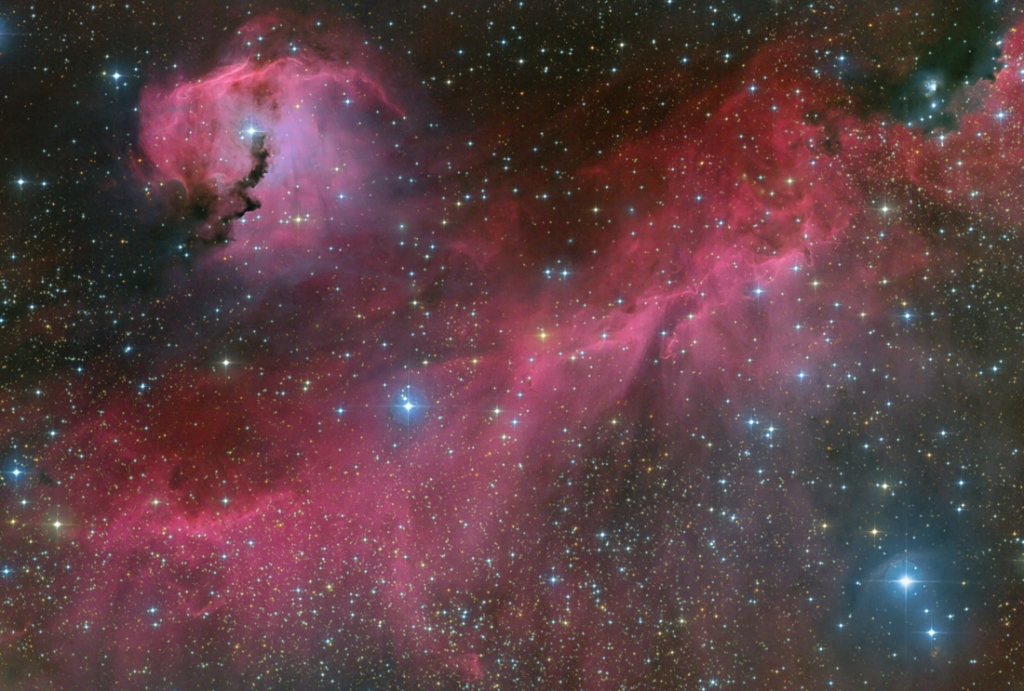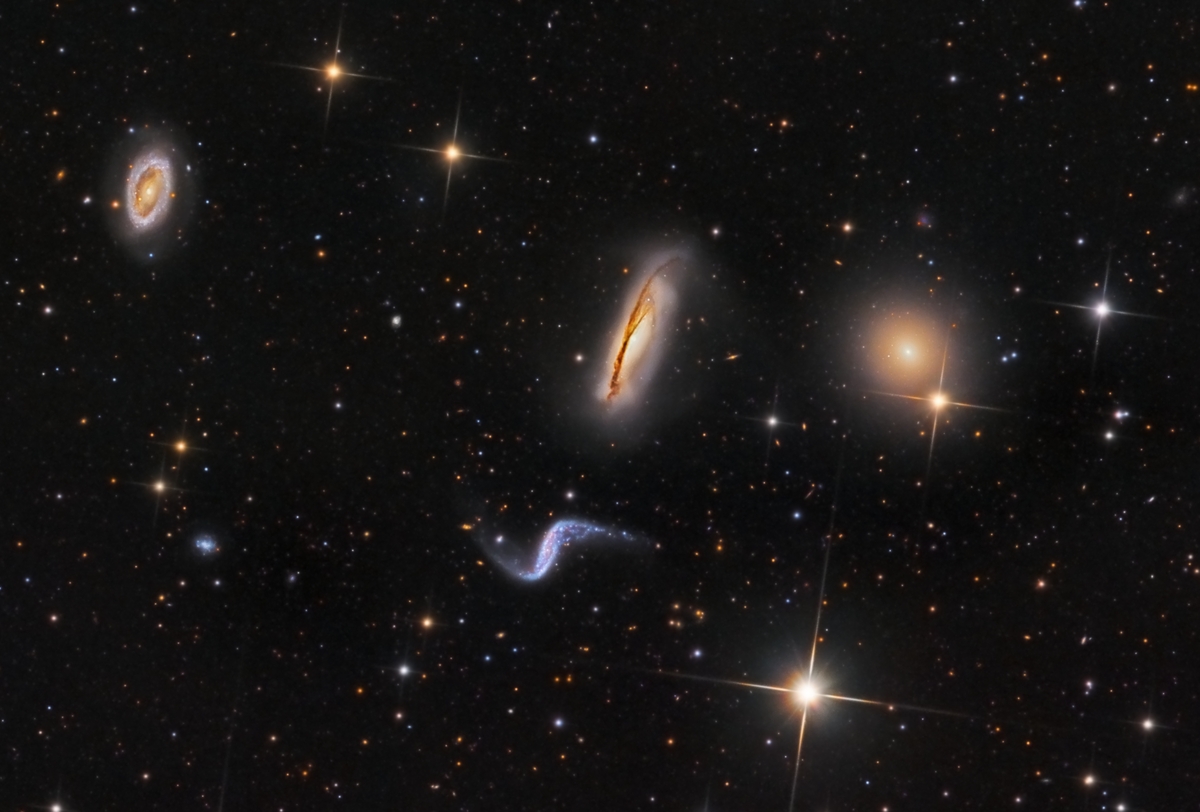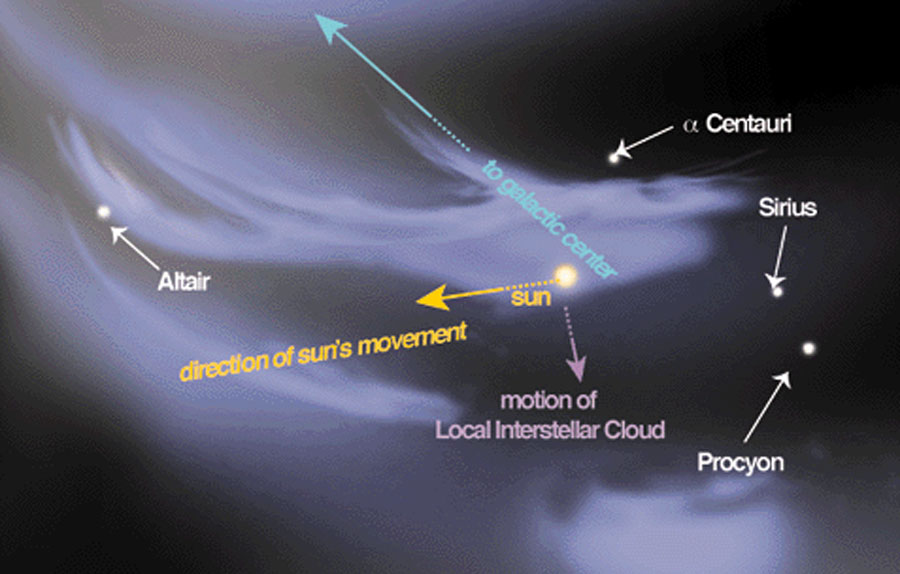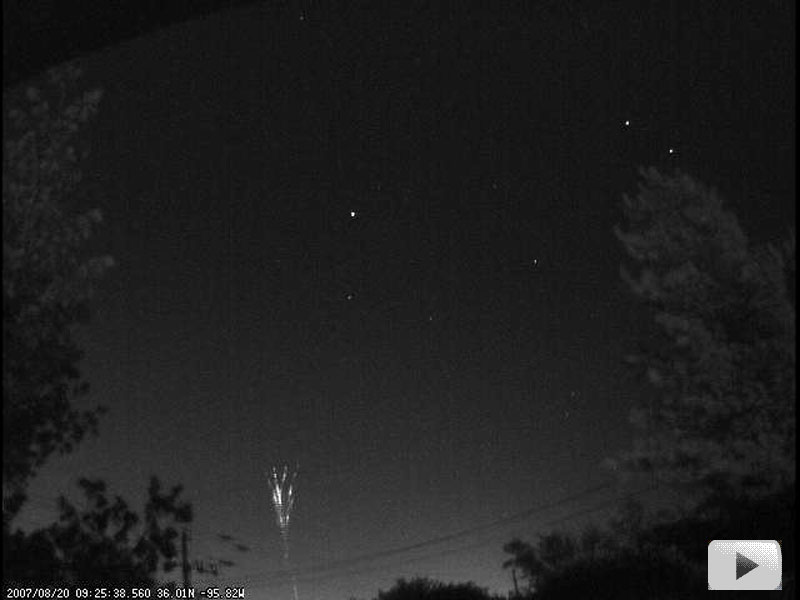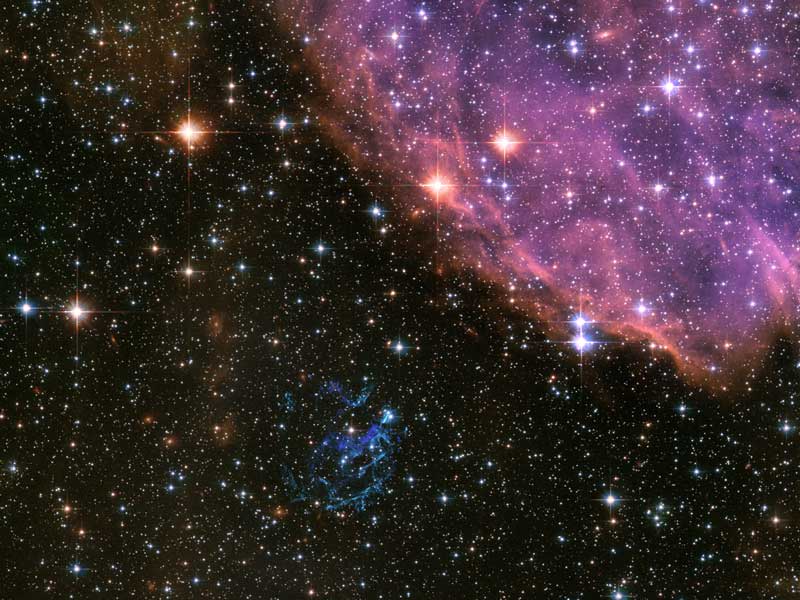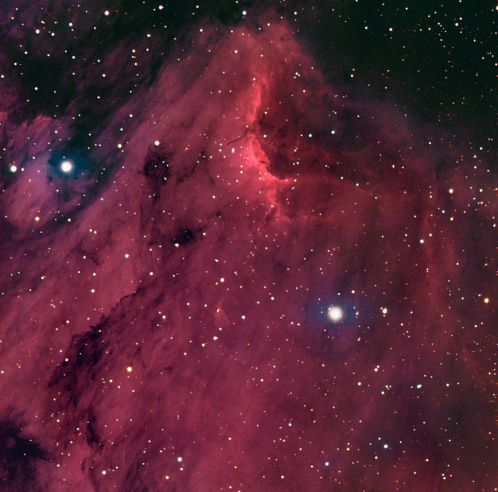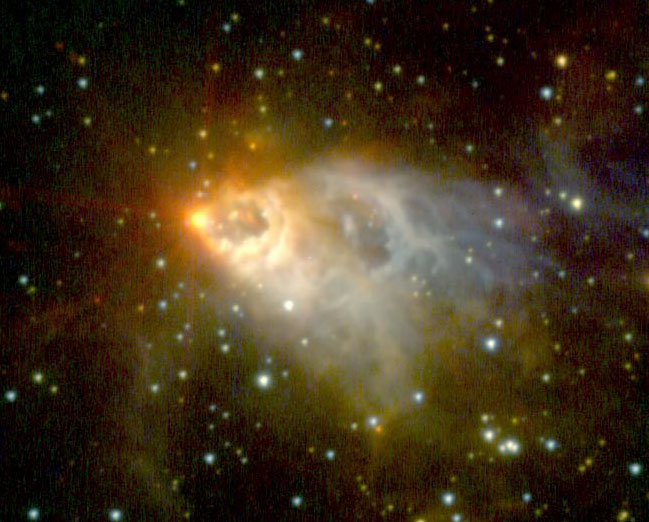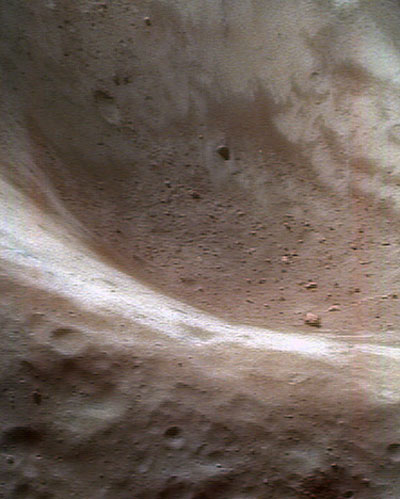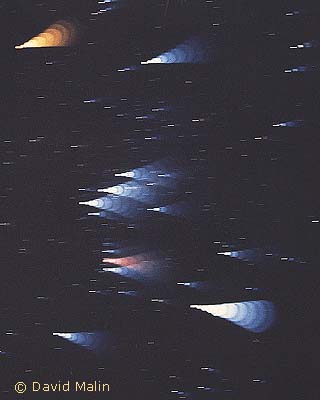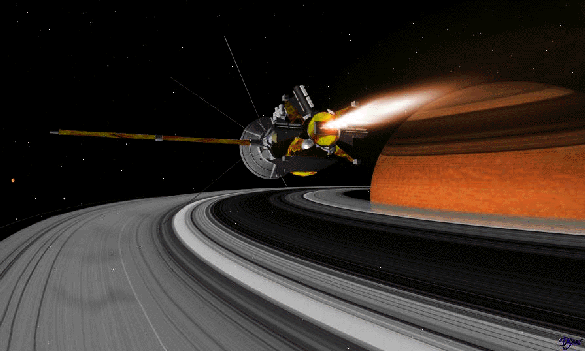| << Previous | Index | Next >> |
2015 A broad expanse of glowing gas and dust presents a bird-like visage to astronomers from planet Earth, suggesting its popular moniker - The Seagull Nebula. This portrait of the cosmic bird covers a 1.6 degree wide swath across the plane of the Milky Way, near the direction of Sirius, alpha star of the constellation Canis Major. Of course, the region includes objects with other catalog designations: notably NGC 2327, a compact, dusty emission region with an embedded massive star that forms the bird's head (aka the Parrot Nebula, above center). Dominated by the reddish glow of atomic hydrogen, the complex of gas and dust clouds with bright young stars spans over 100 light-years at an estimated 3,800 light-year distance.
2014
[imghover6=http://apod.nasa.gov/apod/image/1408/NG ... eld950.jpg]http://apod.nasa.gov/apod/image/1408/NG ... and950.jpg[/imghover6]Image Credit & Copyright: Michael Miller
2013 This striking, otherworldy scene really is a view from planet Earth. The ochre sky and strawberry red sun were photographed on August 22nd near the small village of Strawberry, California, USA. Found along Highway 108, that location is about 30 miles north of the origin of California's large Rim Fire, still threatening areas in and around Yosemite National Park. The extensive smoke plumes from the wildfire are easily visible from space. But seen from within the plumes, the fine smoke particles suspended in the atmosphere dim the Sun, scattering blue light and strongly coloring the sky.
2012 There is something very unusual in this picture of the Earth -- can you find it? A fleeting phenomenon once thought to be only a legend has been newly caught if you know just where to look. The above image was taken from the orbiting International Space Station (ISS) in late April and shows familiar ISS solar panels on the far left and part of a robotic arm to the far right. The rarely imaged phenomenon is known as a red sprite and it can be seen, albeit faintly, just over the bright area on the image right. This bright area and the red sprite are different types of lightning, with the white flash the more typical type. Although sprites have been reported anecdotally for as long as 300 years, they were first caught on film in 1989 -- by accident. Much remains unknown about sprites including how they occur, their effect on the atmospheric global electric circuit, and if they are somehow related to other upper atmospheric lightning phenomena such as blue jets or terrestrial gamma flashes.
2011 Scanning the skies for galaxies, Canadian astronomer Paul Hickson and colleagues identified some 100 compact groups of galaxies, now appropriately called Hickson Compact Groups. The four prominent galaxies seen in this intriguing telescopic skyscape are one such group, Hickson 44, about 100 million light-years distant toward the constellation Leo. The two spiral galaxies in the center of the image are edge-on NGC 3190 with its distinctive, warped dust lanes, and S-shaped NGC 3187. Along with the bright elliptical, NGC 3193 at the right, they are also known as Arp 316. The spiral in the upper left corner is NGC 3185, the 4th member of the Hickson group. Like other galaxies in Hickson groups, these show signs of distortion and enhanced star formation, evidence of a gravitational tug of war that will eventually result in galaxy mergers on a cosmic timescale. The merger process is now understood to be a normal part of the evolution of galaxies, including our own Milky Way. For scale, NGC 3190 is about 75,000 light-years across at the estimated distance of Hickson 44.
2010 The stars are not alone. In the disk of our Milky Way Galaxy about 10 percent of visible matter is in the form of gas, called the interstellar medium (ISM). The ISM is not uniform, and shows patchiness even near our Sun. It can be quite difficult to detect the local ISM because it is so tenuous and emits so little light. This mostly hydrogen gas, however, absorbs some very specific colors that can be detected in the light of the nearest stars. A working map of the local ISM within 10 light-years based on recent observations is shown above. These observations show that our Sun is moving through a Local Interstellar Cloud as this cloud flows outwards from the Scorpius-Centaurus Association star forming region. Our Sun may exit the Local Interstellar Cloud, also called the Local Fluff, during the next 10,000 years. Much remains unknown about the local ISM, including details of its distribution, its origin, and how it affects the Sun and the Earth.
2009
[imghover6=http://apod.nasa.gov/apod/image/0908/N7771biggs900.jpg]http://apod.nasa.gov/apod/image/0908/N7 ... sLabel.jpg[/imghover6]Credit & Copyright: Kent Biggs
Labels generated by Astronomy.net
Labels generated by Astronomy.net
2008 Giant star forming region W5 is over 200 light-years across and about 6,500 light-years away in the constellation Cassiopeia. W5's sculpted clouds of cold gas and dust seem to form fantastic shapes in this impressive mosaic of infrared images from the Spitzer Space Telescope. In fact, the area on the right includes the structures previously dubbed the Mountains of Creation. New evidence indicates that successive generations of stars formed in the W5 region in an expanding pattern of triggered star formation. The older, earlier generations of stars seem to cluster near the middle of the enormous cavities, with younger stars seen near the rims. Winds and radiation from the older, central stars likely carve out and compress surrounding interstellar material, triggering the collapse that gave rise to younger, later generations of stars farther out. In the false-color image, heated dust still within the cavities appears red, while the youngest stars are forming in the whitish areas. W5 is also known as IC 1848, and together with IC 1805 it is part of a complex region popularly dubbed the Heart and Soul Nebulae.
2007 Have you ever seen a gigantic jet? They are extremely rare but tremendously powerful. Gigantic jets are a newly discovered type of lightning discharge between some thunderstorms and the Earth's ionosphere high above them. Pictured above is one such jet caught by accident by a meteor camera in Oklahoma, USA. The gigantic jet, at the lower left, traversed perhaps 70 kilometers in just under one second. Clicking on the image will bring up a movie in many browsers, also visible here. Gigantic jets are much different from regular cloud-to-cloud and cloud-to-ground lightning. The bottoms of gigantic jets appear similar in appearance to another type cloud-to-ionosphere strike called blue jets, while the tops appear similar to upper-atmosphere red sprites. Although the mechanism and trigger that causes gigantic jets is a topic of research, it is clear that the jets reduce charge imbalance between different parts of Earth's atmosphere. A good way to look for gigantic jets is to watch a powerful but distant thunderstorm from a clear location.
2006 It's the blue wisp near the bottom that's the remnant of a tremendous recent supernova explosion. The large pink structure looming to the upper right is part of N76, a large star forming region in our neighboring Small Magellanic Cloud (SMC) galaxy. The supernova remnant wisp, with full coordinate name 1E0102.2-7219 and frequently abbreviated as E0102, also lies in the SMC, about 50 light years away from N76. The above image is a composite of several images taken by the Hubble Space Telescope. E0102 is of research interest because we see it as it appeared only 2,000 years after its explosion. Examination of E0102 therefore gives clues about how an enigmatic supernova works and what materials it dispersed into the surrounding interstellar medium.
2005 Where will Hurricane Katrina go? One of the stronger storm systems of modern times appears headed for landfall somewhere in the southern USA sometime today. Katrina was designated yesterday a rare Category 5 Hurricane, the strongest designation for a storm on Earth, and one that indicates sustained winds greater than 250 kilometers per hour. Pictured above is a digitally processed image from the orbiting GOES-12 weather satellite that shows the massive storm system yesterday in the Gulf of Mexico. Starting as a slight pressure difference, hurricanes grow into large spiraling storm systems of low pressure, complete with high winds and driving rain. A hurricane is powered by evaporating ocean water, and so typically gains strength over warm water and loses strength over land. Much remains unknown about hurricanes and cyclones, including how they are formed and the exact path they will take.
2004 Our Moon's appearance changes nightly. This time-lapse sequence shows what our Moon looks like during a lunation, a complete lunar cycle. As the Moon orbits the Earth, the half illuminated by the Sun first becomes increasingly visible, then decreasingly visible. The Moon always keeps the same face toward the Earth. The Moon's apparent size changes slightly, though, and a slight wobble called a libration is discernable as it progresses along its elliptical orbit. During the cycle, sunlight reflects from the Moon at different angles, and so illuminates different features differently. A full lunation takes about 29.5 days, just under a month (moon-th).
2003 Even if the Moon really were made of green cheese it probably wouldn't look this bizarre. Still, this mosaic of 53 images was recorded by the Jupiter-bound Galileo spacecraft as it passed near our own large natural satellite in 1992. The pictures were recorded through three spectral filters and combined in an exaggerated false-color scheme to explore the composition of the lunar surface as changes in mineral content produce subtle color differences in reflected light. Familiar to earthdwellers, the lunar near side is on the left, but the space-based view looks down on the Moon's north pole located in the upper half of the image near the shadow line. Blue to orange shades indicate volcanic lava flows. The dark blue Mare Tranquillitatis at the lower left is richer in titanium bearing minerals than the green and orange maria above it. Near the bottom of the image and to the right of Tranquillitatis is the dark oval-shaped Mare Crisium surrounded by shocking pink colors indicating material of the lunar highlands.
2002 The Pelican Nebula, also known as IC 5070, lies about 2,000 light-years away in the high and far-off constellation of Cygnus, the Swan. This picture spans a portion of the magnificent nebula about 30 light-years wide. Fittingly, this cosmic pelican is found just off the east "coast" of the North America Nebula, another surprisingly familiar looking emission nebula in Cygnus. In fact, the Pelican and North America nebulae are part of the same large star forming region. The two glowing nebulae appear separated from our vantage point by a large obscuring dust cloud running across the upper left corner in this gorgeous color view. Within the Pelican Nebula, dark dust clouds also help define the eye and long bill, while a bright front of ionized gas suggests the curved shape of the head and neck. Even though it is almost as close as the Orion Nebula, the stellar nursery marked by the Pelican and North America nebulae has proven complex and difficult to study.
2001 Young star AFGL 2591 is putting on a show. The massive star is expelling outer layers of dust-laced gas as gravity pulls inner material toward the surface. AFGL 2591 is estimated to be about one million years old -- much younger than our own Sun's 5 billion-year age -- and has created a nebula over 500 times the diameter of our Solar System in just the past 10,000 years. The above image in infrared light is one of the first from the new NIRI instrument mounted on one of the largest ground-based optical telescopes in the world: Gemini North. Sharp details are discernable that are blocked by opaque dust in visible-light images. Close inspection of the image reveals at least four expanding rings, indicating an episodic origin to the mysterious activity. AFGL 2591 lies about 3000 light years away toward the constellation of Cygnus.
2000 From fifty kilometers above asteroid Eros, the surface inside one of its largest craters appears covered with an unusual substance: regolith. The thickness and composition of the surface dust that is regolith remains a topic of much research. Much of the regolith on 433 Eros was probably created by numerous small impacts during its long history. In this representative-color view taken by the robot spacecraft NEAR-SHOEMAKER currently orbiting Eros, brown areas indicate regolith that has been chemically altered by exposure to the solar wind during micrometeorite impacts. White areas are thought to have undergone relatively less exposure. The boulders visible inside the crater appear brown, indicating either that they are old enough to have a surface itself tanned by the solar wind, or that they have somehow become covered with some dark surface regolith.
1999 Double, double toil and trouble; Fire burn, and cauldron bubble ... Maybe Macbeth should have consulted the Witch Head Nebula. This suggestively shaped reflection nebula is associated with the bright star Rigel in the constellation Orion. More formally known as IC 2118, the Witch Head Nebula glows primarily by light reflected from Rigel. Rigel is located about one photo-width off the image to the right. Fine dust in the nebula reflects the light. The blue color is caused not only by Rigel's blue color but because the dust grains reflect blue light more efficiently than red. The same physical process causes Earth's daytime sky to appear blue, although the scatterers here are molecules of nitrogen and oxygen. The nebula lies about 1000 light-years away.
1998 What determines a star's colour? Its temperature. Red stars are cool, around 3,000 kelvins (K), while blue stars are hotter and can have temperatures over 30,000 K. Our own lovely yellow Sun's temperature is a comforting 6,000 K. Differences in star colours are dramatically illustrated in the above photo of the constellation Orion, made using a "star trail step-focus" technique. In this technique, a time exposure is used to create star trails, but during the exposure, the focus is changed in steps. For the brighter stars, the blurred image produces more saturated colours in photographs. At the upper left, the cool red supergiant Betelgeuse stands out from the other, hotter, bluish stars composing the body of the constellation. Bright Rigel, a blue supergiant, is at the lower right.
1997 Scheduled for launch in October, the Cassini spacecraft will spend seven years traveling through the Solar System -- its destination, Saturn. On arrival Cassini will begin an ambitious mission of exploration which will include parachuting a probe to the surface of Titan, Saturn's largest moon. This artist's vision offers a dramatic view of Cassini's engine firing during the SOI (Saturn Orbit Insertion) maneuver as it passes above the ring plane. Before the development of the telescope, the gas giant Saturn was the most distant planet known to astronomers. Ten times farther from the Sun it receives only 1 percent of the sunlight that Earth does. Operating in this faint sunlight, the Cassini spacecraft can't use solar arrays so, like other missions to the outer Solar System, it will be powered by radioisotope thermoelectric generators (RTGs).
1996 What unusual eggs have been laid by this majestic swan? The star forming region above, known as Swan Nebula, is the home of hot red-glowing gas, dark lanes of dust, bright young stars and -- what are those? Of the few stars visible in the Swan Nebula, several have quite unusual colors and are hypothesized to be very young stars still shrouded by gas from the cloud that formed them. The Swan Nebula is quite large and massive as it contains roughly 1000 times the mass of our Sun. The bright central region is about 15 light years across lies about 5000 light years away toward the constellation of Sagittarius. The distinctive shape causes this region to have several other names, including the Omega Nebula, the Horseshoe Nebula, and the Lobster Nebula.
1995 Pictured, a NASA Saturn V rocket blasts off on July 16th, 1969 carrying the crew of Apollo 11 to the Moon. The Saturn V rocket was the largest rocket ever used by NASA, and the only one able to lift the large masses needed to land astronauts on the moon and returning them safely. Saturn V rockets launched all of the Apollo moon missions, and several to Earth orbit as well.
| << Previous | Index | Next >> |
